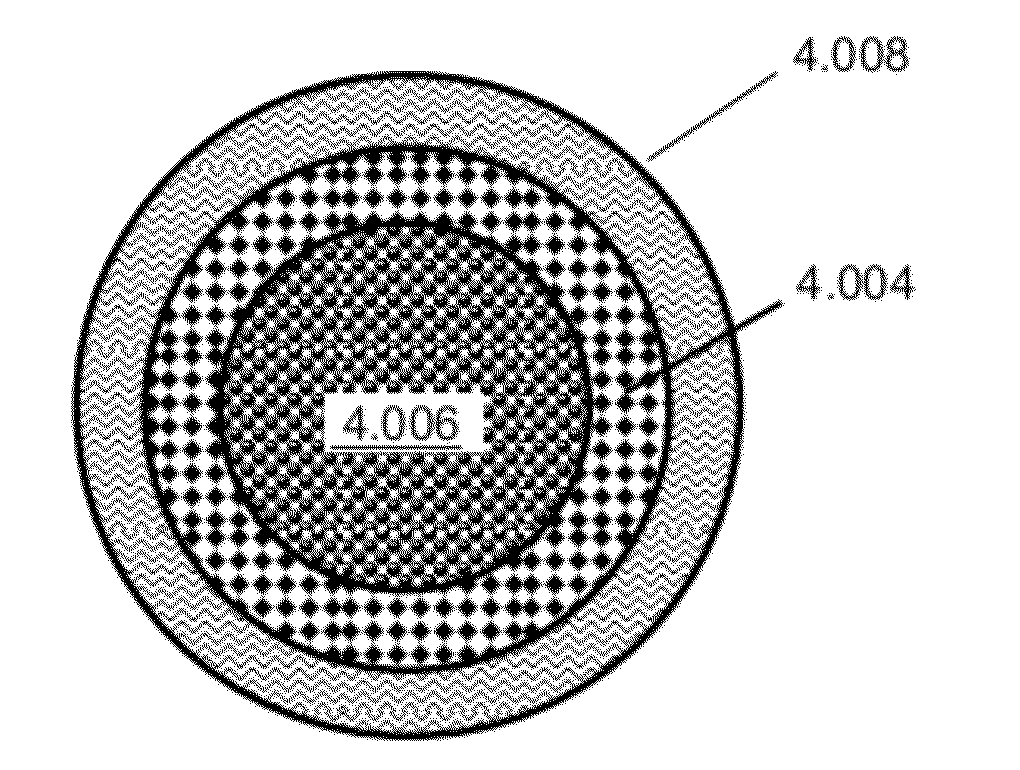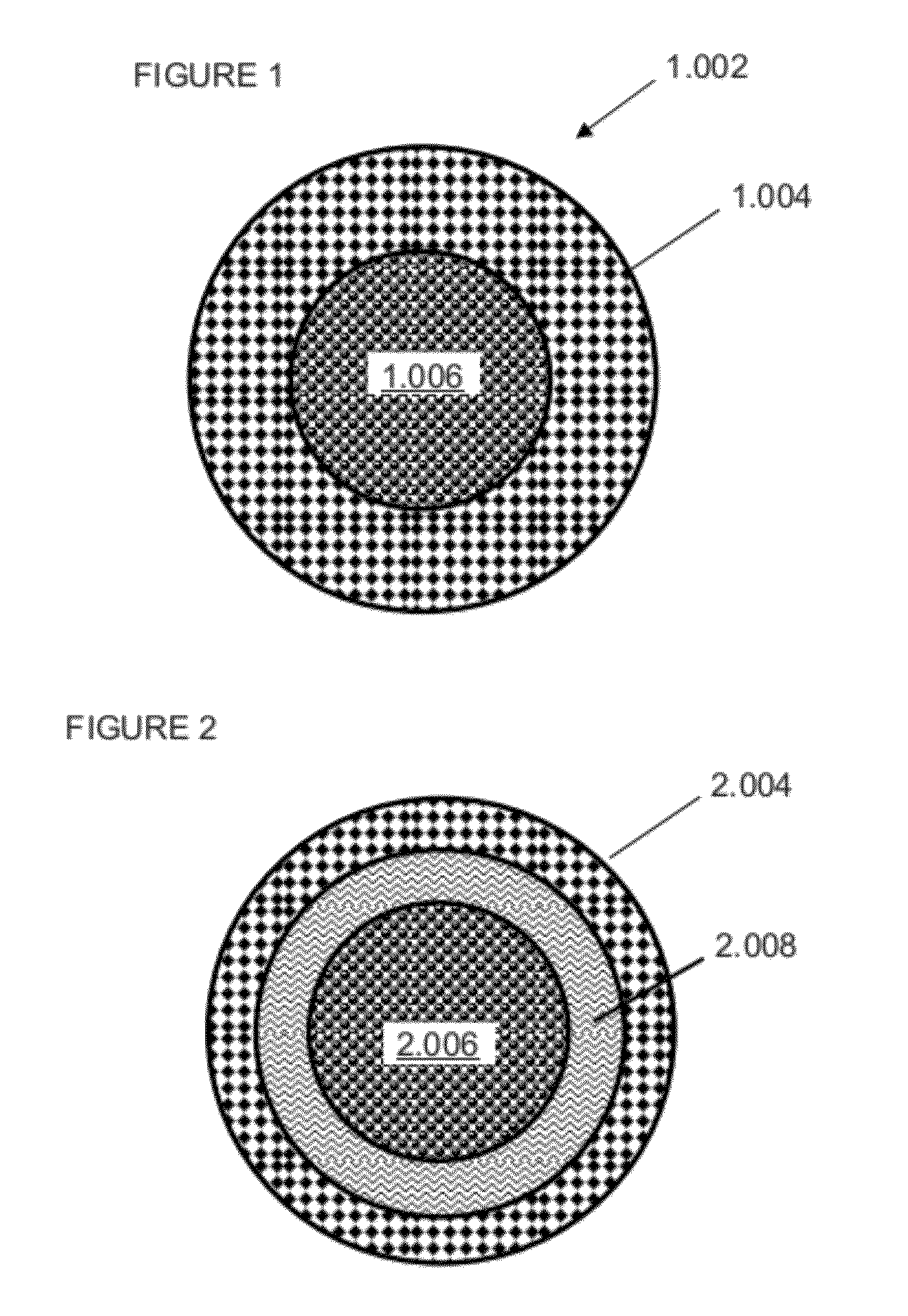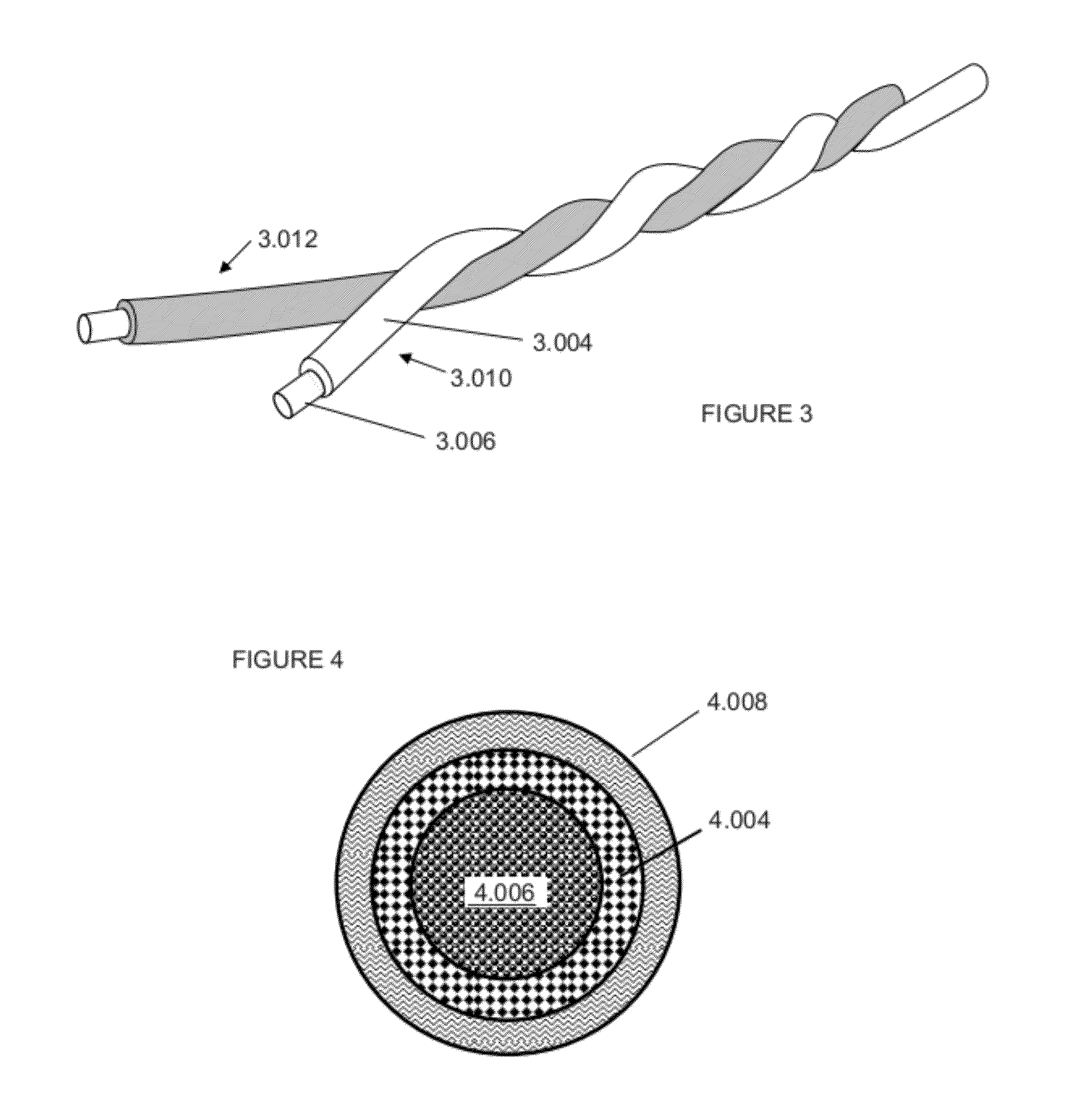Fire resistant cable
a technology of fire-resistant cables and insulators, which is applied in the direction of conductive materials, plastic/resin/waxes insulators, conductive materials, etc., can solve the problems of unsuitability of aluminum for use in conductors, and achieve the effect of increasing the resistance to water passag
- Summary
- Abstract
- Description
- Claims
- Application Information
AI Technical Summary
Benefits of technology
Problems solved by technology
Method used
Image
Examples
example 1
[0076]A two-roll mill was used to prepare the compositions denoted A, B, C and D in Table 1. In each case, the ethylene-propylene (EP) polymer was banded on the mill (10-20° C.) and other components were added and allowed to disperse by separating and recombining the band of material just before it passed through 10 the nip of the two rolls. When these were uniformly dispersed, the peroxide was added and dispersed in a similar manner.
[0077]Flat rectangular sheets of about 1.7 mm thickness were fabricated from the milled compositions by curing and moulding at 170° C. for 30 minutes under a pressure of approximately 7 MPa.
[0078]Rectangular sheet specimens with dimensions 30 mm×13 mm×1.7 mm (approx) were cut from the moulded sheets and fired under slow firing conditions (heating from room temperature to 1000° C. at a temperature increase 20 rate of 12° C. / min followed by holding at 1000° C. for 30 minutes) or fast firing conditions (putting sheets into a pre-heated furnace at 1000° C. ...
example 2
[0080]This example tests the performance of the composition denoted “E” in Table 2. In this example the EP polymer was banded on the mill (40-50° C.) and other components were added and allowed to disperse by separating and recombining the band of material just before it passed through the nip of the two rolls. When these were uniformly dispersed, the peroxide was added and dispersed in a similar manner.
[0081]Flat rectangular sheets of about 1.7 mm thickness were fabricated from the milled compositions by curing and moulding at 170° C. for 30 minutes under a pressure of approximately 7 MPa.
[0082]Rectangular sheet specimens with dimensions 30 mm×13 mm×1.7 mm (approx) were cut from the moulded sheets and fired under fast firing conditions (insertion into a furnace maintained at 1000° C. followed by holding at 1000° C. for 30 minutes). After firing, the sample took the form of a ceramic. Visual examination confirmed that composition “E” had formed a ceramic residue that had maintained ...
example 3
[0083]This example relates to preparation of thermoplastic compositions in accordance with the invention. Compositions shown in Table 3 were prepared.
TABLE 3COMPOSITION GCOMPOSITION HTPVEPDMTHERMOPLASTICS% weight% weightTPV29.8EPDM30Ammonium Polyphosphate28.028.2Alumina Trihydrate15.6015.70Talc25.926.1Process aids0.70TOTAL:100.00100.00
[0084]Compositions G and H in Table 3 were prepared by mixing the polymers with the respective filler and additive combination using a Haake Record Batch Mixer.
[0085]Composition G was based on a thermoplastic vulcanizate (TPV, Santoprene 591-73), with calcium stearate and paraffin used as processing aids premixed with the TPV pellets and fillers respectively, and then 10 mixed in the same way as for the polystyrene composition.
[0086]Composition H was based on an ethylene propylene diene polymer (Nordel 3745). This composition was not crosslinked. It was mixed at a 15 temperature of 1700 C but otherwise per Composition G.
[0087]3 mm thick plaques were co...
PUM
| Property | Measurement | Unit |
|---|---|---|
| temperature | aaaaa | aaaaa |
| temperature | aaaaa | aaaaa |
| melting point | aaaaa | aaaaa |
Abstract
Description
Claims
Application Information
 Login to View More
Login to View More - R&D
- Intellectual Property
- Life Sciences
- Materials
- Tech Scout
- Unparalleled Data Quality
- Higher Quality Content
- 60% Fewer Hallucinations
Browse by: Latest US Patents, China's latest patents, Technical Efficacy Thesaurus, Application Domain, Technology Topic, Popular Technical Reports.
© 2025 PatSnap. All rights reserved.Legal|Privacy policy|Modern Slavery Act Transparency Statement|Sitemap|About US| Contact US: help@patsnap.com



